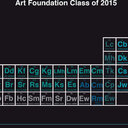Alterations in glucose-6-phosphatase gene expression in sepsis.
Słowa kluczowe
Abstrakcyjny
BACKGROUND
The influence of sepsis on the expression and activity of hepatic glucose-6-phosphatase (Glu-6-Pase) was examined during the early hyperglycemic phase and the later hypoglycemic phase.
METHODS
Sepsis was induced in anesthetized, fasted rats by cecal ligation and puncture, and liver samples were taken at 0, 0.5, 1, 1.5, and 20 hours after cecal ligation and puncture.
RESULTS
The mRNA abundance of hepatic Glu-6-Pase increased fourfold at 0.5 hours over healthy control values, two-fold after 1 hour, and returned to normal after 1.5 hours. This finding was followed by a corresponding increase in Glu-6-Pase activity and was coincident with increased plasma glucose levels and decreased liver glucose-6-phosphate (Glu-6-P) at 0.5 and 1 hours. Plasma insulin and glucagon levels remained unchanged during this period, whereas corticosterone levels increased 2.5-fold over control values. At 20 hours cecal ligation and puncture, plasma glucose levels returned to normal, coincident with a 90% reduction in Glu-6-Pase mRNA abundance. Glu-6-Pase activity and Glu-6-P concentration returned to normal levels, while insulin, glucagon, and corticosterone levels increased significantly, i.e., 40-fold, 6.5-fold, and 6-fold, respectively.
CONCLUSIONS
The initial rise and subsequent decline in blood glucose correlate very well with a corticosterone-dependent induction of hepatic Glu-6-Pase, mRNA, and protein, followed by an insulin-dependent suppression of its expression.


